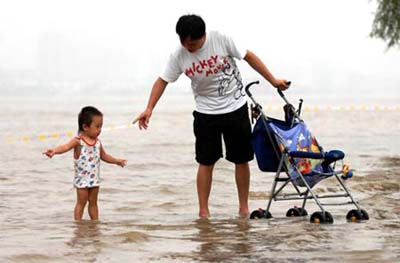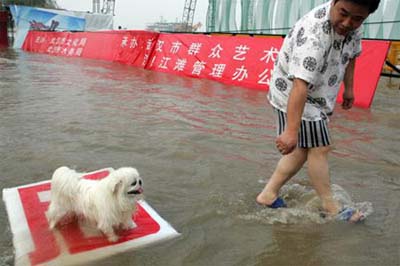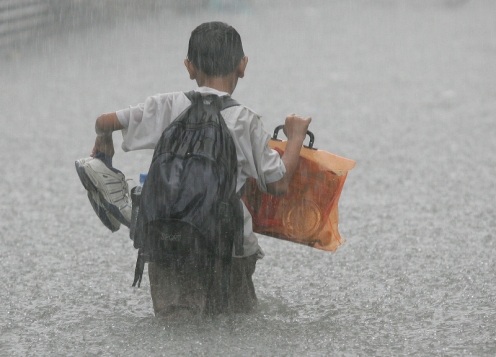FLOOD- A BRIEF NOTE
A flood is an overflow or accumulation of an expanse of water that submerges land.Flooding may result from the volume of water within a body of water, such as a river or lake, which overflows or breaks levees, with the result that some of the water escapes its normal boundaries.
Principal types of flood
Riverine floods
-
Slow kinds: Runoff from sustained rainfall or rapid snow melt exceeding the capacity of a river’s channel. Causes include heavy rains from monsoons, hurricanes and tropical depressions, foreign winds and warm rain affecting snow pack. Unexpected drainage obstructions such as landslides, ice, or debris can cause slow flooding upstream of the obstruction.
-
Fast kinds: include flash floods resulting from convective precipitation (intense thunderstorms) or sudden release from an upstream impoundment created behind a dam, landslide, or glacier.
Estuarine floods
-
Commonly caused by a combination of sea tidal surges caused by storm-force winds. A storm surge, from either a tropical cyclone or an extratropical cyclone, falls within this category.
Coastal floods
-
Caused by severe sea storms, or as a result of another hazard (e.g. tsunami or hurricane). A storm surge, from either a tropical cyclone or an extratropical cyclone, falls within this category.
Catastrophic floods
-
Caused by a significant and unexpected event e.g. dam breakage, or as a result of another hazard (e.g. earthquake or volcanic eruption).
Muddy floods
-
A muddy flood is generated by run off on crop land.
A muddy flood is produced by an accumulation of runoff generated on cropland. Sediments are then detached by runoff and carried as suspended matter or bedload. Muddy runoff is more likely detected when it reaches inhabited areas.
Muddy floods are therefore a hillslope process, and confusion with mudflows produced by mass movements should be avoided.
Other
-
Floods can occur if water accumulates across an impermeable surface (e.g. from rainfall) and cannot rapidly dissipate (i.e. gentle orientation or low evaporation).A series of storms moving over the same area.Dam-building beavers can flood low-lying urban and rural areas, often causing significant damage
Effects
Primary effects
-
Physical damage – Can range anywhere from bridges, cars, buildings, sewer systems, roadways, canals and any other type of structure.
-
Casualties – People and livestock die due to drowning. It can also lead to epidemics and waterborne diseases.
Secondary effects
-
Water supplies – Contamination of water. Clean drinking water becomes scarce.
-
Diseases – Unhygienic conditions. Spread of water-borne diseases.
-
Crops and food supplies – Shortage of food crops can be caused due to loss of entire harvest.[3] However, lowlands near rivers depend upon river silt deposited by floods in order to add nutrients to the local soil.
-
Trees – Non-tolerant species can die from suffocation.[4]
Tertiary/long-term effects
-
Economic – Economic hardship, due to: temporary decline in tourism, rebuilding costs, food shortage leading to price increase etc.




this is a awsome site man